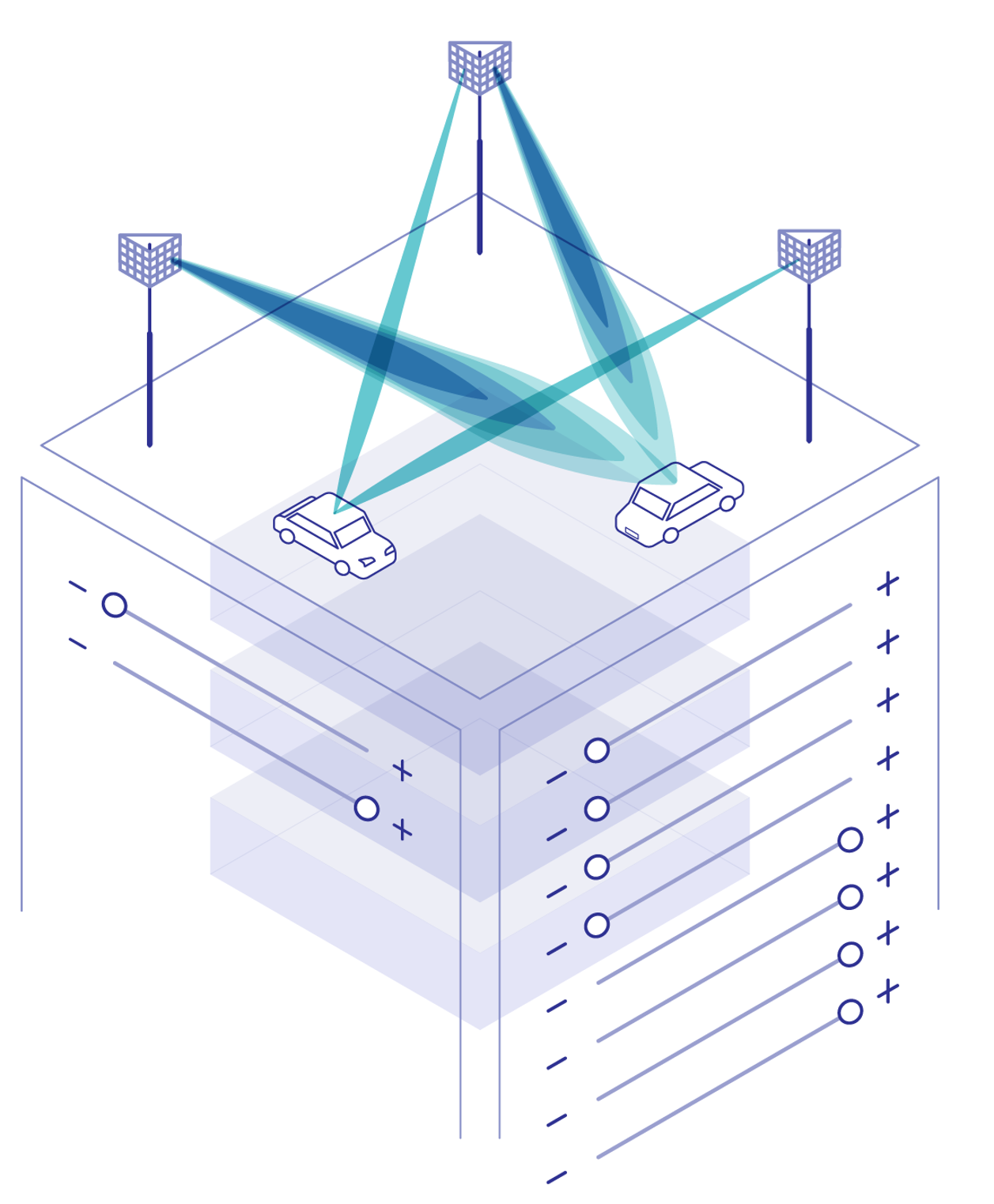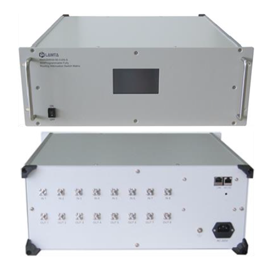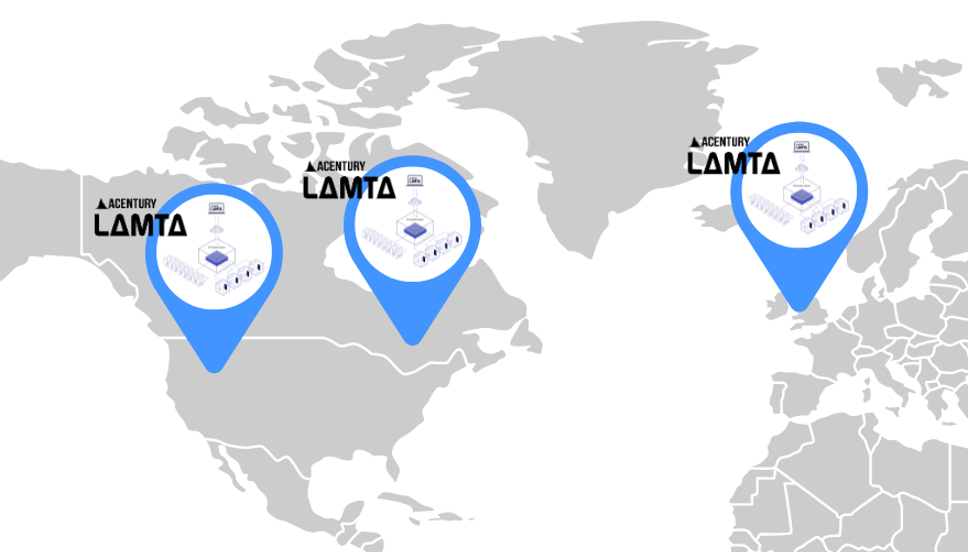Modernizing the RF lab with RF Signal Distribution and Attenuation Control
There is a long-time customer of Acentury that is a Tier 1 wireless operator in a mature market. Their network environment includes many different technology vendors, multiple radio access technologies, and several frequency bands spanning 600MHz to 3500MHz. By any definition, it is a complex environment.
Subscriber growth is flat, and churn is a major driver of financial success. There is constant pressure to improve network performance, launch new technologies, and continuously deliver new and innovative services to attract and keep customers.
The typical wireless customer in this market is sophisticated. They understand quality of service, and how mobile phones are supposed to behave. They have high expectations of their service provider.
In response to these demands, this operator is careful to evaluate and certify various technologies and configurations before they are deployed into the production network. One of their main tools for this is a large RF lab, and they turned to Acentury to help them solve various operational challenges.
 Figure 1: Combining an RF switch matrix or an attenuation array with LAMTA orchestration software can enable software-controlled testing and setup.
Figure 1: Combining an RF switch matrix or an attenuation array with LAMTA orchestration software can enable software-controlled testing and setup.
Using LAMTA’s orchestration platform for zero-touch automation
With so many radio sources, shield boxes and RF chambers to connect, using RF patch panels and separate variable attenuators became too cumbersome. The first step in modernizing the RF lab was to install RF switch matrices. These fully non-blocking RF switches allow any combination of RF signal inputs to be distributed to any combination of RF outputs, completely under software control. The Acentury LAMTA software platform was used to manage the configuration of the switch matrices and provides precise control over signal attenuation and routing.
 Figure 2: LAMTA is a scalable solution that enables users to test wireless network functionality and performance by automatically configuring and controlling various network elements.
Figure 2: LAMTA is a scalable solution that enables users to test wireless network functionality and performance by automatically configuring and controlling various network elements.
Set up tests in minutes with no manual patching
The first benefit to replacing RF patch panels with software-controlled switch matrices was a massive reduction in test set-up and tear-down times. The manual work hours of disconnecting and reconnecting RF patch cables to create different test scenarios are replaced with a few minutes of switch reconfiguration through the LAMTA GUI. No more time is wasted tracing jumpers and signal paths, and the time savings can be reinvested in running better RF tests. Another side benefit was improving the usable life of expensive RF jumpers and connectors by significantly reducing the wear and tear of repeated connections and disconnections.
Share limited and expensive test resources
The mobile network operator (MNO) realized additional efficiency benefits now that RF sources can be used in multiple tests simultaneously. Using the old setup with patch panels, the signal from an eNB, gNB or RRU can only be routed to one test chamber or shield box at a time. Using LAMTA, they can be fed to multiple chambers at once, and the signal entering each chamber can be controlled independently.
This allows multiple testers to use the same RF source at the same time.
Software-controlled handover and roaming tests including MIMO and Carrier Aggregation
Further, LAMTA enabled this operator to configure test scripts and run them automatically without user involvement. This eliminated manual test runs managed by highly skilled lab technicians.
With Acentury LAMTA, their lab resources spend less time configuring, and more time testing. Highly skilled lab technicians also spent less time running manual-intensive tasks, and more time focused on higher-valued lab activities.
This has some important benefits. The impact of new infrastructure software releases on overall network performance can be evaluated prior to field deployment. The behaviour of subscriber devices can also be measured, and comparisons can be made between various firmware releases. Since the testing is automated and repeatable, tests can be run the same way identically hundreds of times so the results will be statistically significant.
With Acentury LAMTA, they can perform more tests – more quickly – ensuring greater confidence in the performance of their network.

Manage RF test resources using Acentury LAMTA
As RF labs get larger, it becomes even harder to manage all the resources efficiently and effectively. Lab managers need to co-ordinate the needs and objectives of many different testers with the availability of radio and chamber resources. This MNO found this challenge to be time-consuming and often frustrating work.

LAMTA offers a resource management solution. Lab resources can be assigned to certain testers, and this simplifies the testing environment. Assignment also reduces testing interruptions. The optional Resource Reservation capability allows the lab manager to make a resource available exclusively to a specific tester for a defined time window. The calendar view allows everyone to see what resources are available, and request access directly.
With Acentury LAMTA, lab managers have a complete picture of how the RF lab is being used.
Operate an RF Lab from anywhere with Acentury LAMTA
Perhaps the biggest benefit that this LAMTA customer experienced was the ability to operate the RF lab remotely. This became critically important during the COVID-19 pandemic. When their office spaces were closed for health and safety reasons, it was difficult or even impossible to conduct testing that required many people on-site in the RF lab.
LAMTA easily solved that problem. During COVID, this operator was able to have testers complete their work from home, with only a small number of people physically at the RF lab.
 Figure 3: An RF Switch Matrix can be used to connect RF cables once.
Figure 3: An RF Switch Matrix can be used to connect RF cables once.
Improve RF test repeatability with Acentury LAMTA
One of the operator’s biggest issues was test repeatability. Using RF patch panels and manually controlling signal attenuation made it impossible to maintain a repeatable process from test to test, and eroded confidence with test results. Acentury LAMTA helped address this in several ways.
With LAMTA, the test environment never changes. Test engineers connected RF cables once and they never have to touch them again. Since connections are never altered after initial setup, this MNO was assured that the test environment is the same test after test.
Test result variability was also previously caused by the overuse and wear and tear from RF jumpers and connectors. High-quality components will degrade after many connection and disconnection cycles, and the performance deterioration isn’t obvious. Since LAMTA eliminates the need for manual reconfiguration, this was no longer a concern. The other side benefit is that they don’t have to replace expensive RF cables when connectors wore out or shielding became damaged because of overuse.
The largest factor influencing test repeatability was the tester themselves. When the tester was responsible for manually controlling attenuation and rates of change, it was virtually impossible to effectively repeat a test. Imagine trying to manually control variable attenuation for multiple base stations when simulating handover in a carrier aggregation scenario. With LAMTA, all attenuation is software controlled, ensuring a repeatable process from test to test.
Another benefit of software control is that tests can be repeated with automation. Testers are assured that each test will run the same and software-controlled attenuation ensures the same test each time.
With Acentury LAMTA, tester engineers have complete confidence in their test results.
Software-controlled handover and roaming tests including MIMO and Carrier Aggregation
Wireless subscribers are becoming more demanding, so it is more important than ever to ensure robust network performance. As such, there is an ever-increasing need for testing sophisticated features in the lab before they are released in the production network.
Acentury’s LAMTA solution addressed this challenge by enabling simulation of “real-world” situations in the lab. Software control over RF switch matrices allows the precise combination of many RF signals in controlled ways. In this way, network features and capabilities like handovers, roaming, carrier aggregation and MIMO can be thoroughly tested. They rely on LAMTA to evaluate new infrastructure software loads and configuration details before they are released into the live network.
A lab equipped with LAMTA does not require any manual labour to reconfigure RF cabling between tests. All RF path switching and attenuation is automated through the software-controlled RF switch matrices and operated via the LAMTA user interface. Devices under test are monitored remotely. Testers can be anywhere with an Internet connection.
LAMTA can control equipment across multiple RF lab sites as well. In this way, testers in one city can use test resources (RF sources, chambers, etc.) located in another city, town or country. A single RF lab location could be used by testers around the globe, 24 hours a day.
End-to-End Testing with Acentury LAMTA
In addition to controlling the RF path switching and attenuation, LAMTA can also control the rest of the test environment. It supports the option to control network elements such as NodeB radio units from several different equipment vendors. User equipment such as Android Smartphones can also be controlled through LAMTA. This allows test engineers to operate the RF test environment through a single interface.
An RF Lab Automation Platform for Labs of All Sizes

Because of its modular nature, LAMTA is suitable for wireless operators of all sizes and levels of sophistication.
LAMTA supports RF switch matrices and variable attenuators of various sizes from different manufacturers. It can connect to any RF chamber type, from small desktop shielded enclosures to full-size walk-in Faraday cages and anechoic chambers.
The LAMTA software itself is modular and operators can simply select the modules they need. It is also available as a perpetual license or SaaS model which allows budget flexibility.
Acentury LAMTA: the right tool for the job
When it came to automate their RF lab, this Tier 1 operator turned to Acentury. Since that decision, they have continued to expand their LAMTA deployment to control over a dozen RF switches, more than 10 RF chambers, three different RF infrastructure vendors and at least seven frequency bands with more on the horizon.
They count on LAMTA every day to help validate network configuration changes and handset software versions, ensuring that they perform up to their customer’s expectations.
To learn more about our LAMTA product, click here.
Introducing the LAMTA RF Test Position
Sharing RF Lab resources with Multiple Testers to Improve ROI
Have a question or comment?
We'd love to hear it. Fill out our General Inquiry Form or reach us directly at: info@acentury.co
CONTACT US